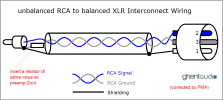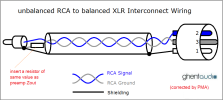Hello everyone,
This may or may not be a silly question, but I simply cannot find an answer on either ASR or from any online resources-- So here goes-- !
1. I have an Anthem MRX540 which outputs into an Anthem MCA225 power amplifier. The MRX only has RCA and I would like to utilize the Balanced Inputs of the MCA225.
I have previously used the active "Art Cleanbox Pro," to do so, but wasn't very impressed with the results.
I was wondering if I could use an equalizer instead to convert to Balanced Audio? As in MRX540 RCA Out to Equalizer RCA In, the Equalizer XLR Out to MCA225 XLR In?
Would this work and if so, could anyone please suggest a decent equalizer with good specs within $500 U.S.D?
Please be advised that I live in India and don't have access to Many U.S Brands. The common ones available are DBX, Behringer, Rockville, Technical Pro, Boss, etc.
I would have ideally liked a Jensen or Radial converter but only Radial Passive JDI is available and no models from Jensen.
Many Thanks in advance!
This may or may not be a silly question, but I simply cannot find an answer on either ASR or from any online resources-- So here goes-- !
1. I have an Anthem MRX540 which outputs into an Anthem MCA225 power amplifier. The MRX only has RCA and I would like to utilize the Balanced Inputs of the MCA225.
I have previously used the active "Art Cleanbox Pro," to do so, but wasn't very impressed with the results.
I was wondering if I could use an equalizer instead to convert to Balanced Audio? As in MRX540 RCA Out to Equalizer RCA In, the Equalizer XLR Out to MCA225 XLR In?
Would this work and if so, could anyone please suggest a decent equalizer with good specs within $500 U.S.D?
Please be advised that I live in India and don't have access to Many U.S Brands. The common ones available are DBX, Behringer, Rockville, Technical Pro, Boss, etc.
I would have ideally liked a Jensen or Radial converter but only Radial Passive JDI is available and no models from Jensen.
Many Thanks in advance!



